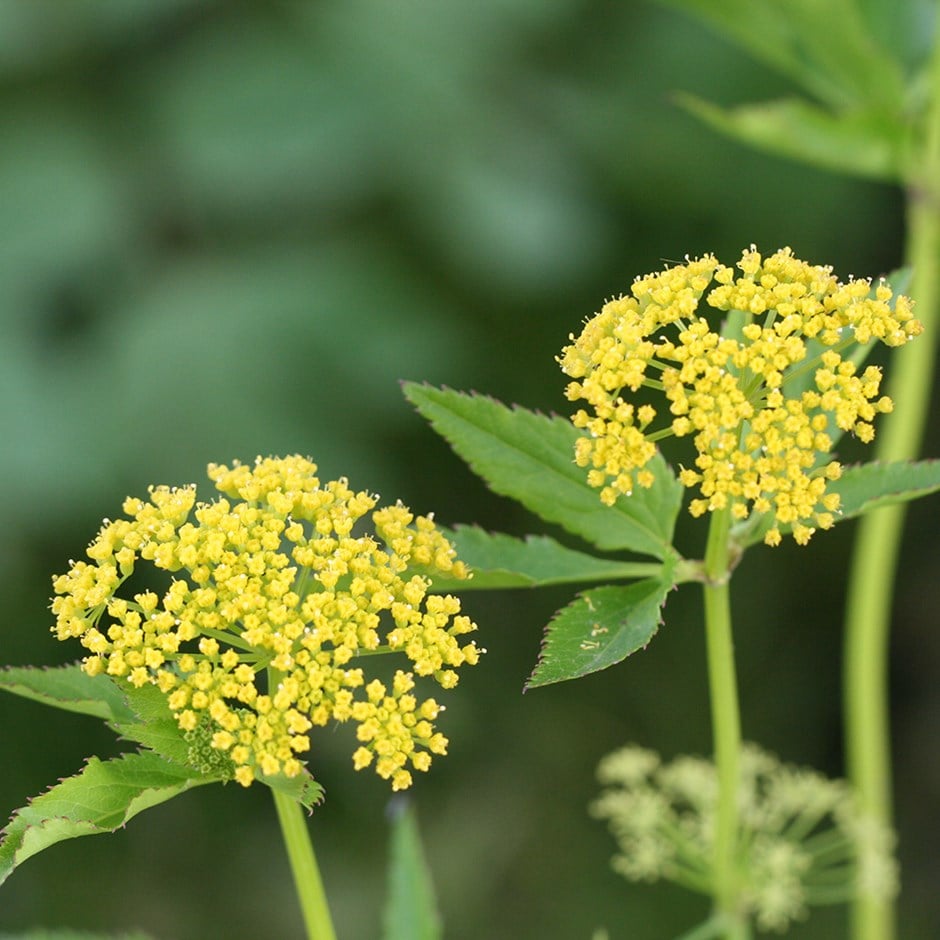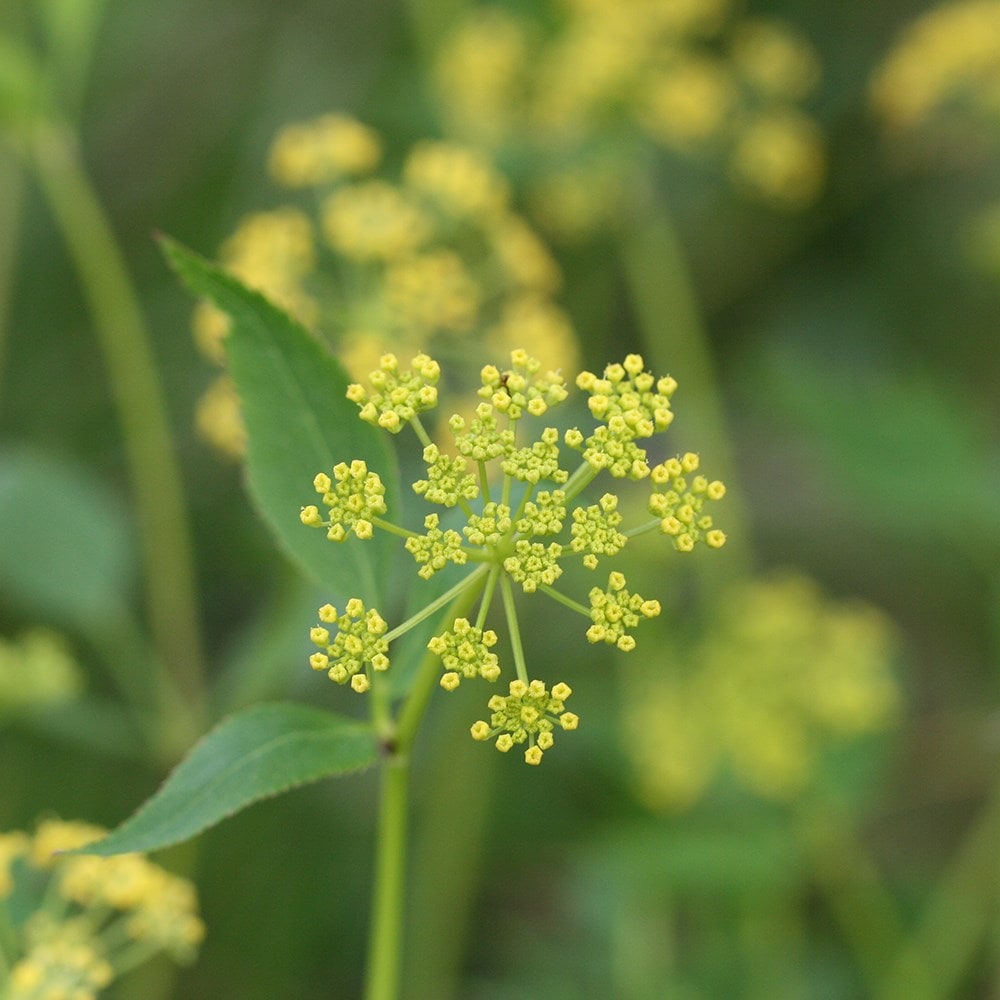Zizia aurea
golden alexanders
- approx 20 seeds
- £3.49
- available to order from spring
Delivery options
- Seed Packets (only) £2.99
- Position: full sun or partial shade
- Soil: fertile, moist but freely draining soil, or general-purpose potting compost for containers
- Rate of growth: average
- Flowering period: May to July
- Hardiness: fully hardy (but sometimes short-lived)
An herbaceous perennial wildflower with upright, branching stems and flat topped clusters of long-blooming, bright yellow flowers followed by attractive, deep plum seed heads. The glossy, pinnate leaves are typical of a member of the carrot family and complement the golden umbels above. A great short-lived perennial naturaliser and early season nectar source for butterflies and bees, Zizia aurea spreads happily by seed to form large patches to give your cottage, informal, or prairie inspired wild garden a real early season boost.
Plant in moist but well-drained soil in full sun or partial shade. It tolerates a range of soil types, including clay, and will perform best in a position that doesn't dry out completely in summer. Water well during dry spells in the first year to help it establish. Taller stems may need staking, especially in exposed sites.
Once flowering is over, allow some seed heads to mature fully if you’d like it to self-seed and spread naturally. Cut back spent stems in late autumn or early spring to tidy up the clump and encourage new growth. Avoid over-fertilising, as this can lead to weak, leggy growth.
Once flowering is over, allow some seed heads to mature fully if you’d like it to self-seed and spread naturally. Cut back spent stems in late autumn or early spring to tidy up the clump and encourage new growth. Avoid over-fertilising, as this can lead to weak, leggy growth.
Sow seeds outdoors in autumn or early spring, as they benefit from a period of cold to help break dormancy. Alternatively, if sowing indoors, mimic this by placing seeds in moist compost, sealing them in a plastic bag, and refrigerating at 4°C (39°F) for 6-8 weeks. After this, sow thinly on the surface of moist seed compost and lightly press in without covering, as light aids germination. Keep at a steady temperature of 18-21°C (64-70°F) and maintain moisture without waterlogging.
Germination can be slow and irregular, often taking several weeks. Once seedlings are large enough to handle, pot on and grow in cooler conditions until they’re ready to be hardened off and planted outside after the risk of frost has passed.
Germination can be slow and irregular, often taking several weeks. Once seedlings are large enough to handle, pot on and grow in cooler conditions until they’re ready to be hardened off and planted outside after the risk of frost has passed.

